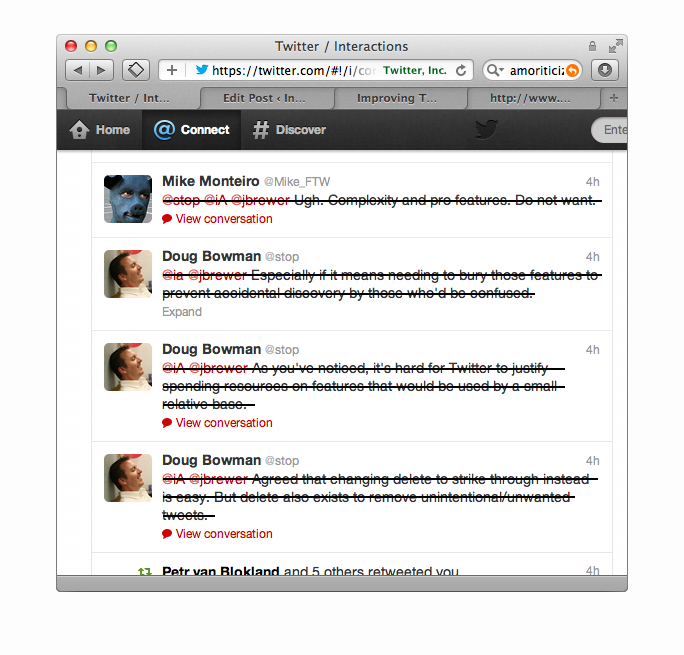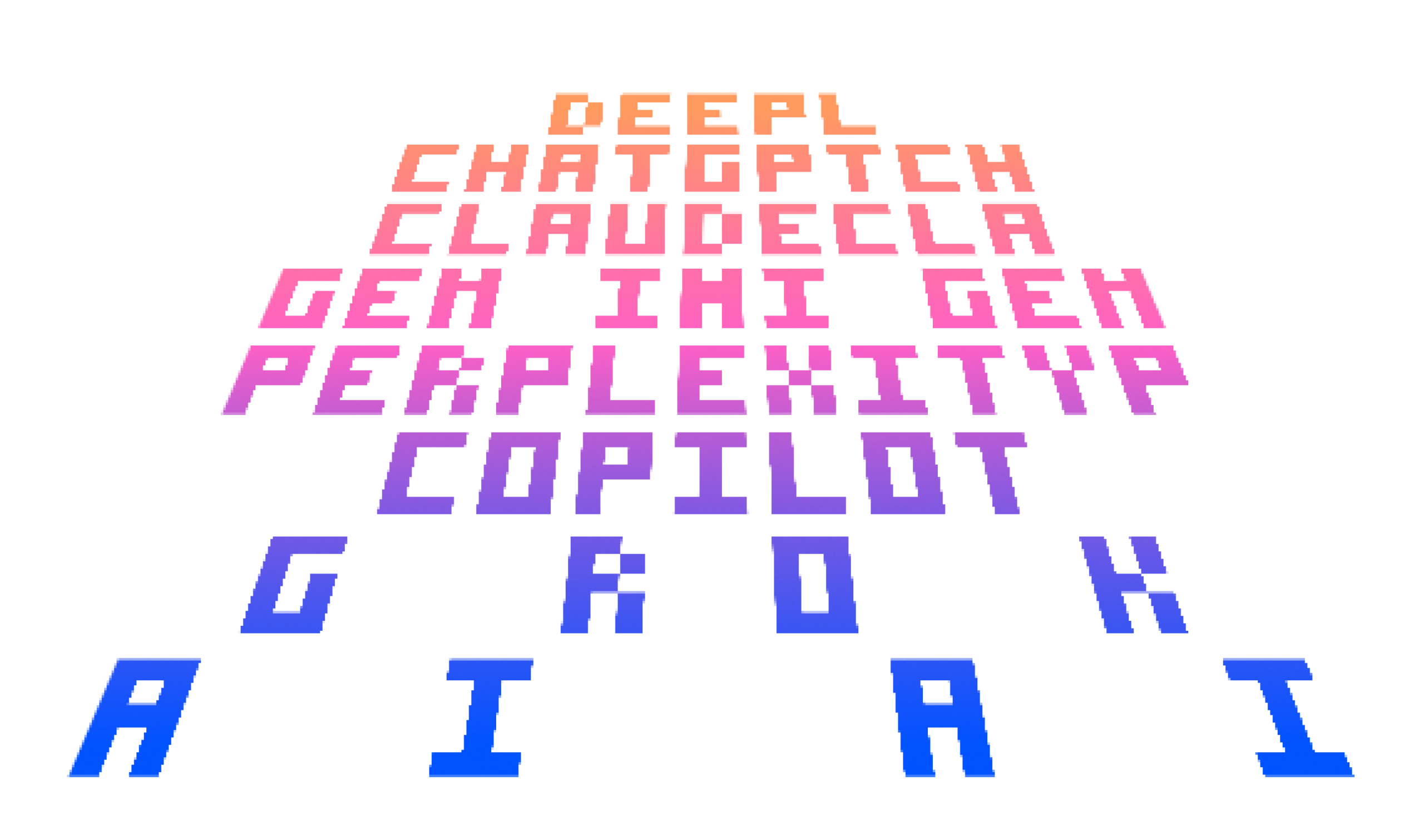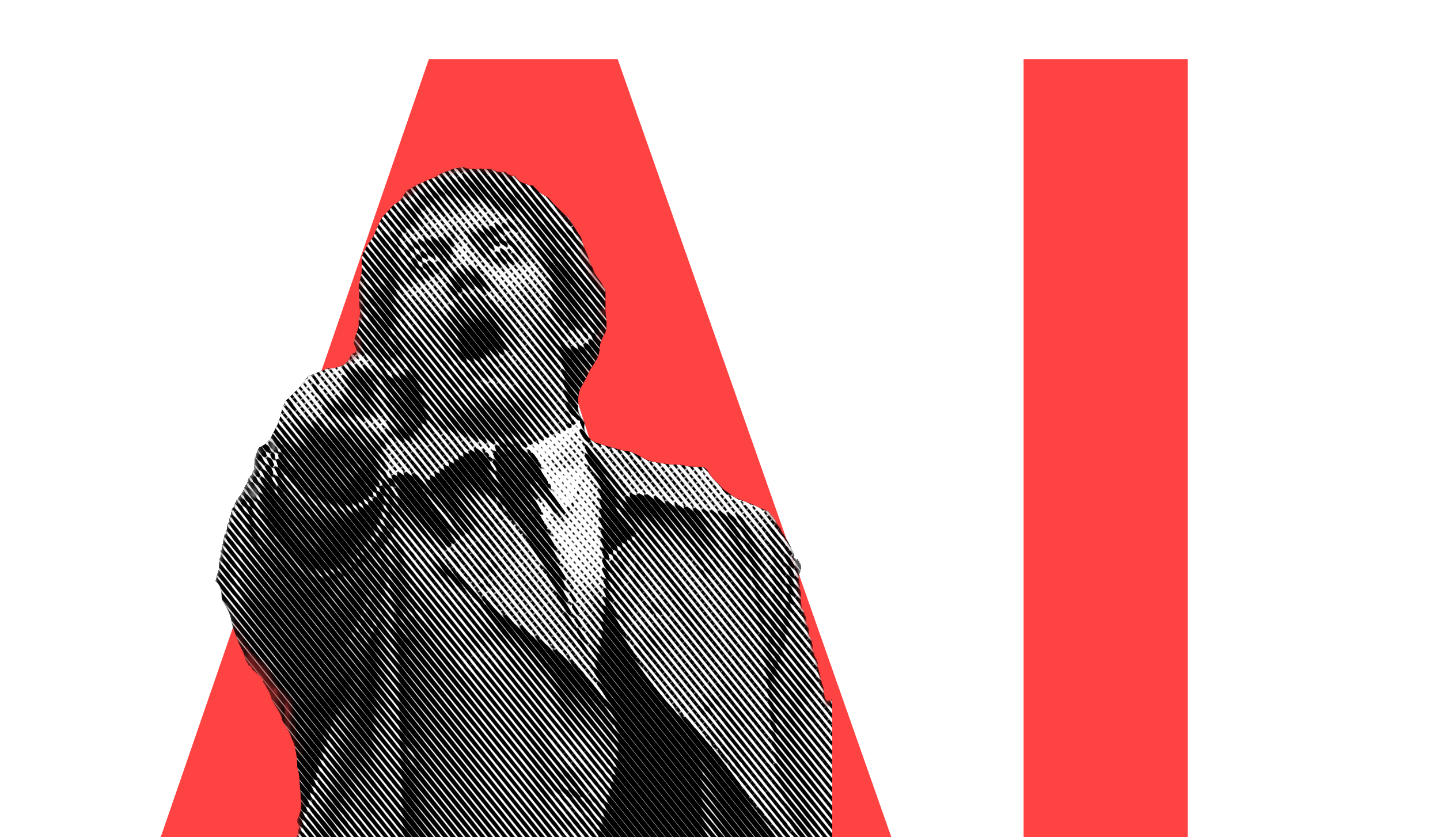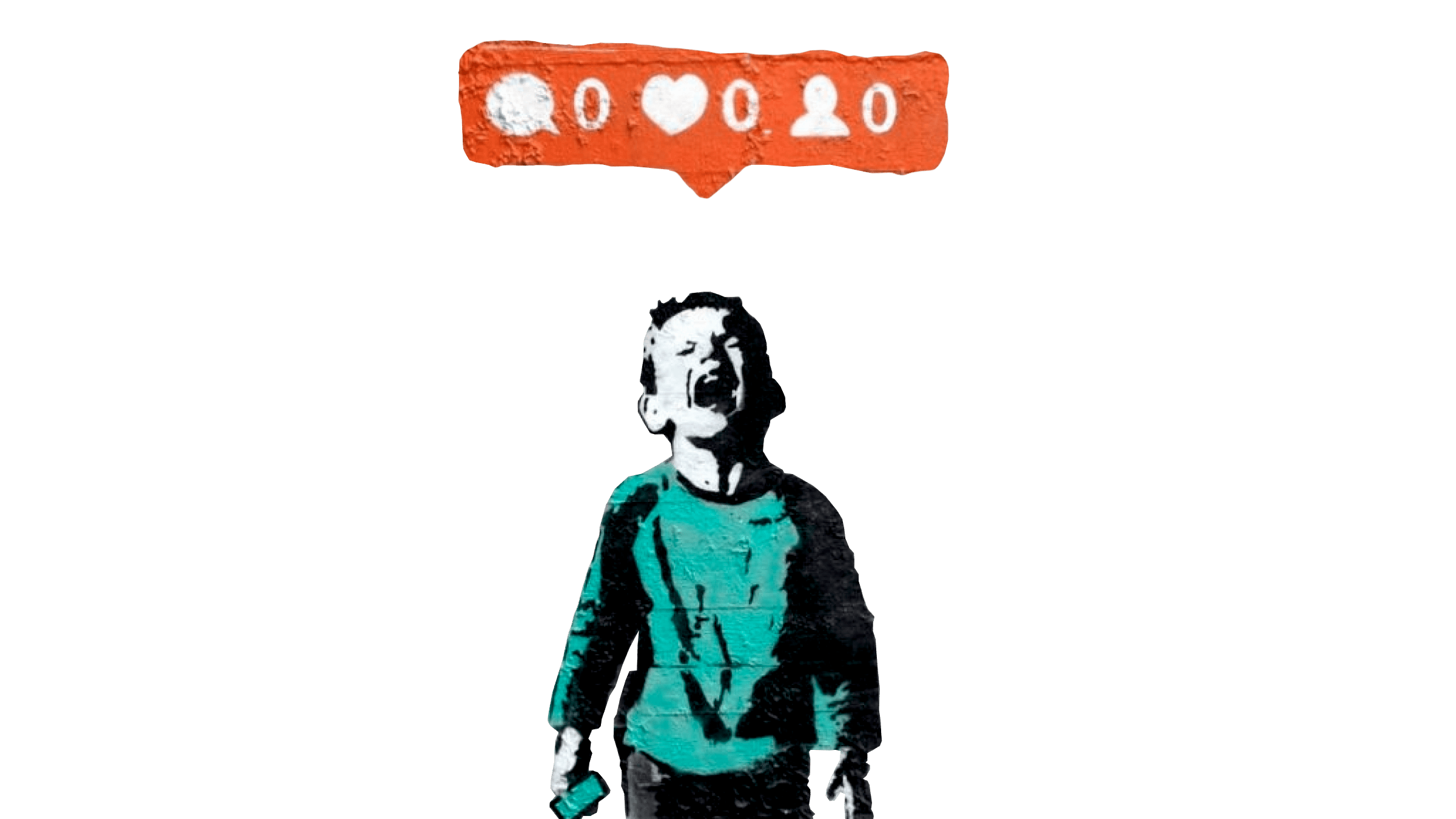How do you deal with erroneous tweets? Not any erroneous tweets, your erroneous tweets. The tweets that you misspelled or, worse, that contain information you later discover is false, or a late night knee-jerk response you regret in the morning. What do you do when the retweets start and people correct you, and then people react to the reactions even though you deleted it right away?
It is extremely difficult to catch up with a bad tweet. One mistake, and you’re that guy that disses women in tech, hates his clients or tortures chihuahuas, and then a campaign starts against you—an evil sinner that needs to be brought to justice by social media avengers. An error on Twitter can easily turn into twitterror.
Bad luck? Pay more attention? Humans make mistakes. Some mistakes happen in good faith—no one knows everything, and no one is so considerate they can avoid ever hurting anyone.
That errors get spotted and corrected quickly is one reason why I like Twitter. That errors get frozen in screenshots like Han Solo in Carbonite… I’m not a big fan of that. My factual and ethical mistakes are spotted and corrected within seconds. And that’s great! If there only was a way to acknowledge my errors without deleting tweets and making a mess in the conversation that followed them!
Twitter is fast, and that speed is part of its charm. But the faster the pace the easier it is to make mistakes. Of course, a single error will rarely cost your career, marriage or professional reputation (…rarely), but even small errors can be painful to deal with. If English is your second or third language, the chances that you misspell or miscommunicate are high. And even if you are a very careful native speaker, you won’t escape the URL-error demon:
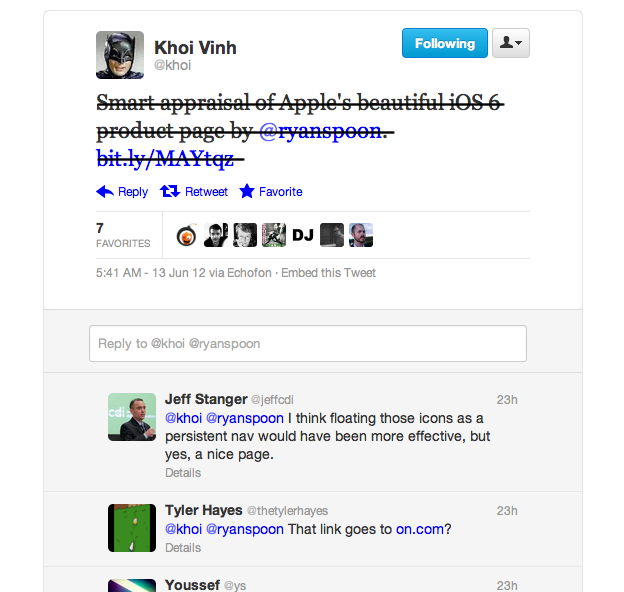
The above is a completely harmless case, but there are plenty of other examples. Just deleting the tweet doesn’t solve the problem either. Deleted information can live on in quoted retweets or look-at-this-stupid-asshole screenshots.
A missing tweet also doesn’t explain why it’s missing. Excuses might be posted after the mistake happened—but they might also never be seen. The only format that clearly states a mistake is a fat strikethrough. It is a strong answer to any interpretations and accusations that follow. It clearly says: “Don’t read this. This is all wrong. I take it back. I’m sorry.” Deleted tweets don’t say that—they smell like a cover-up and often make you look suspicious. And apologetic follow-up tweets don’t have the power to neutralize that screenshot of you screwing up.
The most obvious way to deal with erroneous tweets would be to add a feature to redact them, but editing tweets would:
- be technically unfeasible
- work against the core concept of a status streaming service
- make it difficult to hold people accountable
- bloat the interface
So instead of making a metaphysicaltechnical mess by allowing to edit tweets, I proposed a comparatively simple solution. Add a new status to tweets called “Error”. This is how the Error status could look:

This is how it could work (there might be other simpler ways, but hey, I don’t get paid for this):

The idea is simple. If you make a mistake, instead of deleting the tweet you choose “Mark as Error” and write a follow-up tweet that corrects your mistake. A strikethrough means: “This is just wrong, ignore it and look for a follow-up of this if you’re interested”. Unlike the deleted tweet that leaves a black hole ripe for interpretation, the strikethrough hints at a follow-up down the stream that corrects the mistake. A stupid idea? Fuck yYou might be right, but you have to agree that information that is struck through has a funny magic that might spice things up.
With a little bit of imagination you can also see how people could use this in creative ways, which would no doubt invigorate some debates.
What are the chances?
I made the suggestion on Twitter to Twitter twice. The first time some favored it. The second time Josh Brewer liked it. Creative Director Doug Bowman is still not a big fan expressed some concerns over added complexity:
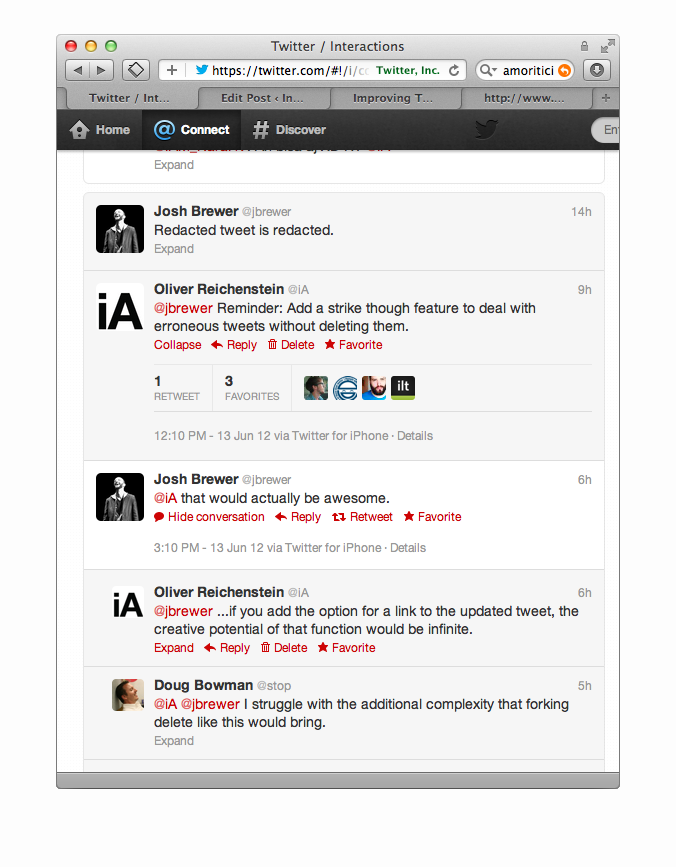
The most influential designer at Twitter didn’t like it expressed concern and the scariest designer on Twitter didn’t like it either:
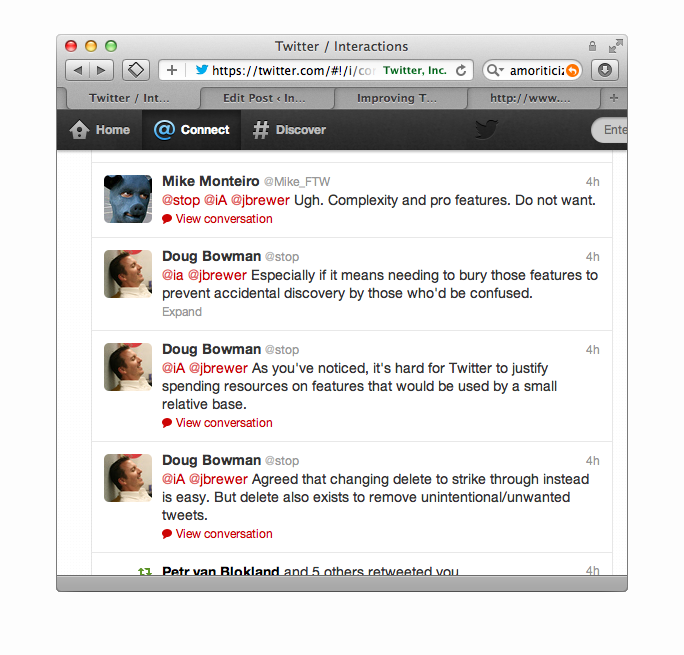
So I decided to write this post to illustrate to the most influential designer at Twitter how easy and likable it could be if done right. And to kick the scariest designer on Twitter in the balls.
But hey, I’m a non-native speaker with terrible spelling and a quick “bad tweet” finger that regrets his spelling mistakes, sloppy fact checking, and Cuba Libre-powered tweets all too often and too late. So this is all very biased. But how would you feel if in a couple of months that screenshot looked like this?
